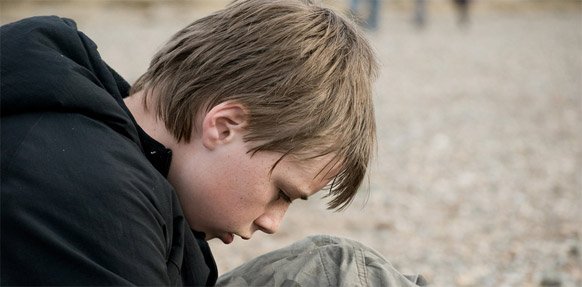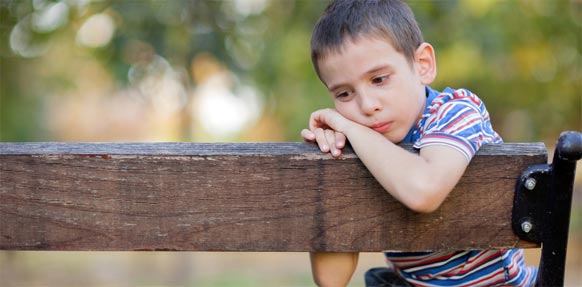Loss of interest, joylessness, a reduced drive and increased fatigue: Like adults, children and adolescents can also suffer from depression and its side effects >
What do you advise all those parents who notice that their child is sad and is crawling away at home?
First of all, if you notice sadness and withdrawal, parents should speak to their child themselves and ask why. If there is a problem at school, a clarifying discussion with the teachers can help. Sometimes the child also has stress that comes from bullying situations or from noise with the girlfriend or boyfriend. These are all solvable problems that can be managed with support.
And if the parent-child conversation doesn’t help?
If you are worried as a parent, the child is joyless for longer and retires, you should consult the pediatrician who knows the child for a first consultation. If the sadness and the accompanying problems are pronounced and there are no understandable reasons with possible solutions, an appointment with the child and adolescent psychiatrist should be made. It is often the case that young people with depression can no longer do or cannot do all the things they used to enjoy. They no longer go outside, often suffer from sleep disorders, and sometimes loss of appetite. In adolescents, feelings of worthlessness, hopelessness and even suicidal thoughts can also be added come.
How often are children and adolescents affected by depression??
Depression is less common in childhood than in adolescents or adults. Children are affected with a frequency of 1.5 percent. At a young age, girls and boys suffer equally from depression. The frequency then increases in adolescence, where five percent are affected, and girls twice as often as boys. Basically, it can be said that the likelihood of developing depression increases with age.
Why are girls affected more often than boys?
Hormonal aspects play a role in puberty. You know, for example, postpartum depression after childbirth, in which hormone changes are also one of the causes. In addition, the way you deal with various difficult life situations decides whether you are more likely to develop a depressive mood. This is where girls differ from boys. Girls tend to internalize, as we doctors call it, more than boys. That is, when things go badly, they tend to blame themselves rather than others, blame themselves or feel guilty. In contrast, boys tend to react more externally and more aggressively in such situations. However, this only applies to the group of girls and boys and not to every individual case. Of course there are boys who are depressed and girls who are aggressive.
What is special about being a therapist with children??
The younger a child is, the less developmentally they can reliably report on their own mood or put their emotional life into words. In a child of kindergarten age, for example, you can see from the outside that the child is sad and that he is not doing well. But it would answer the question of whether it is sad or not doing well. Simply because it cannot yet tell how it is doing.
And with young people?
In adolescence, the adolescents themselves are the ones who can best provide information about their emotional state, while parents here often no longer know how their child is actually doing. Because typically, teenagers talk less to their parents about how they’re doing and more generally about their emotional life.
When can you say that there is depression? Where do you differentiate the clinical picture from a long-term depression?
An important rule of thumb is that as soon as parents start to seriously worry about their child, they should seek help. Appropriate specialist diagnostics and detailed advice then take place. Advice already helps for some, treatment / therapy is necessary for others.
What needs to be clarified first?
The question is how serious the symptoms, i.e. complaints, weigh and whether there is an external reason. Of course there are always sad phases in life, for example when a family member has died or a move presents the child or adolescent with great challenges. It is normal that a person is not always well in such a situation.
When will it be dangerous?
In addition to these phases of sadness, there are situations that you have to take particularly seriously, regardless of how long they last. For example, when the child expresses life-tired thoughts, hopelessness or great despair. Suicidality is the second leading cause of death in adolescence. Such situations and statements must be taken seriously and not dismissed lightly!
In your experience, such suicidal thoughts are often communicated to the outside world?
Yes, according to studies, thoughts of suicide are communicated beforehand in eight to nine out of ten cases. Not always the parents, but more often their peers in adolescence. It is important to ask about it and to show the adolescent that you take your worries seriously and want to help them improve the situation. When a teenager expresses thoughts of suicide, you always have to take it very seriously. We doctors call such situations “red flags”: if they occur, we have to take action immediately. Under no circumstances should you wait and see whether or how the situation may change. In such cases, the question of whether depression is present or not plays a minor role. First of all, it’s about quick help. Here, a specialist in child and adolescent psychiatry must immediately clarify whether it is an acute suicidality, i.e. an emergency with immediate need for action, or whether there is still an ability to coordinate and what the next steps should be.
As a doctor, when do you listen to the problems of children??
Then when the child is not well and this situation lasts longer. Parents also often notice that their child can no longer adequately meet his or her usual life and age-related requirements. In such cases, we doctors consider the so-called functional level, so ask: is the child impaired in his usual psychosocial lifestyle? So does it work at school, for example with performance, with classmates, in the class network? Does the child meet with friends? Does it have hobbies? There is a good one common Family life? If it does not “work” in these areas, ie if the child is so psychosocially impaired that it can no longer cope with these age-related requirements, support is needed.
What can this support look like for depression??
We differentiate between depression based on its severity. Individual counseling is often sufficient for a mild depressive episode. Psychotherapy is often not necessary here. From a moderate depressive episode, psychotherapeutic support is required in some cases, for some, if this is not sufficient, medicinal support with antidepressants, i.e. medication against Depressions. In the event of a severe episode, doctors should also check whether inpatient treatment makes sense. Then it is often not enough to speak to a psychotherapist once a week.
How can you be next to psychotherapy help?
We also take care of the so-called activation, for example, because we know that if the patient no longer feels or can no longer feel pleasure due to his illness, then he can logically no longer have a positive experience. And that leads to withdrawal and avoidance, and in turn exacerbates depression. An important way is to activate the patient in a sporting way, to involve him in group activities, to do things like occupational therapy and other co-therapies and to motivate the child through ward activities and excursions.
How to explain the complex illness of depression to a layperson?
We identify different symptoms on three different levels: On the emotional level there is a mood disorder, which can be expressed in sadness, but also in the feeling of numbness and / or fear. Some sufferers also have reduced self-esteem or feelings of guilt. For example, many children think it is their fault that their parents divorced or that they quarreled. On the second, the behavioral level, there are drive disorders. This means that the child or adolescent is less motivated and no longer does certain things and / or can no longer pull himself up to it. For example, those affected no longer go outside, do less exercise, are often tired, exhausted and withdraw to bed. And then there is the cognitive level, the mental dimension. This manifests itself in automatic negative thoughts and also in difficulty concentrating, in brooding or seeing everything through black glasses. Desires for death and thoughts of suicide can also arise here.
What role do medications play in treating depression?
In the case of a severe depressive episode, the child or adolescent must be admitted to the hospital. As a rule, medication is supportive and makes sense in parallel to psychotherapy. With a moderate degree, our guidelines say: either psychotherapy alone or medication or both. But the fact is also: Some children are already significantly improving through the activation taking place here in the clinic, integration into the ward and accompanying psychotherapy, so that we do not need any additional pharmacotherapy. Of course, this depends on the individual case.
There are disadvantages that speak against taking medication?
The drugs prescribed for depression, called antidepressants, take a long time to work. It’s not that you take it, and the next day you feel better. They are carefully dosed so that they are well tolerated. An effect then comes after about four or six weeks.
Can children prevent depression??
What is always positive for a young person are enjoyable hobbies, being well integrated in a circle of friends and social support. Sufficient exercise, enough sleep and a healthy diet are also important. A positive self-concept and the conviction that problems can be solved are also positive. But even if you follow all this advice, it cannot be ruled out that you will develop depression at some point in your life. At least it will increase the likelihood that the child will live healthier.
Depression can actually go away quickly?
Depressive episodes last for different lengths of time and they don’t go from one day to the next, but the mood slowly improves. To compare it with a picture: It is not like a light switch ("light on, light off"), but more like a dimmer. It is often the case that individual symptoms gradually improve. The affected person does not immediately find his way back to a normal, that is, balanced mood. Sometimes the drive gets better first, and with it the level of activity, the negative thoughts go back, and the mood only improves in succession. If someone suffers from severe depression, we doctors and psychotherapists work multimodally, i.e. in different areas. We take care of the thoughts, improve the activation and provide extensive and supportive advice to the patient and his family. The fact is: Depression is easy to treat.

Your expert for depression in children and adolescents:
Prof. Dr. Katja Becker
Director of the Clinic for Child and Adolescent Psychiatry, Psychosomatics and Psychotherapy at the University Hospital Marburg
RELATED ITEMS
-

Depression in children and adolescents: symptoms, therapy, course
08/13/2019 By Dr. Christine Amrhein Depression is one of the most common mental illnesses in children and adolescents. You can from…
-

Mental illnesses in children and adolescents
Depression in children and adolescents: The range of mental illnesses among young people is large – just like the number of people affected….
-

Mental disorders in children and adolescents, overview – information
Mental disorders in children and adolescents can differ in their characteristics and symptoms from disorders in adulthood….
-

Mental disorders in children and adolescents: symptoms and warning signals
Warning signals for possibly existing illness 04/10/2015 by Dr. Christine Amrhein Mental illnesses are not common in children and adolescents…
